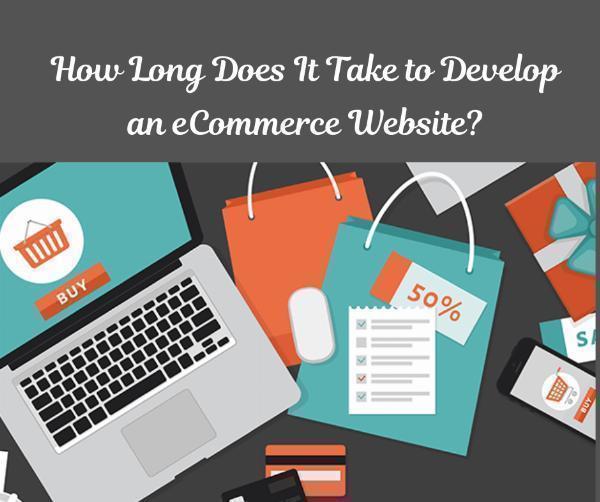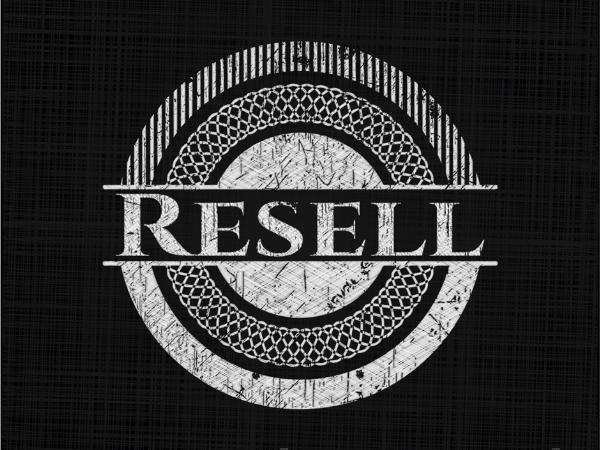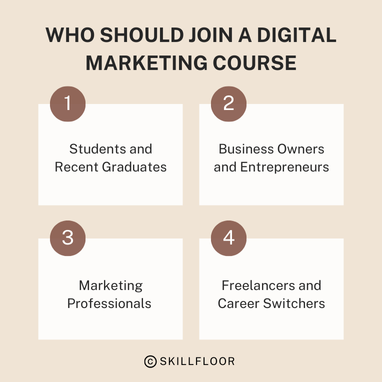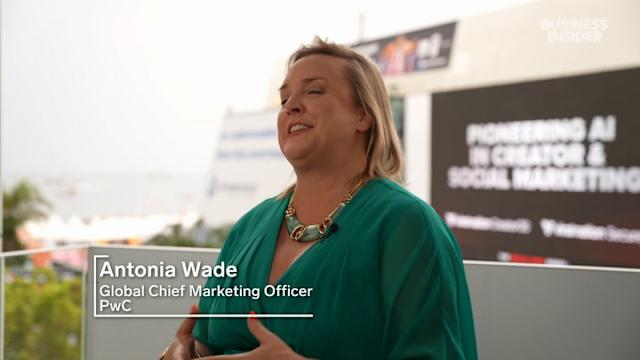The most important role on your social marketing team probably doesn’t exist yet
When I kickoff work with CMOs as an upper-funnel marketing consultant and we discuss their social team org structure, the first thing I say to them is, “Can I actually hear about how your paid social team is staffed and how strong your customer acquisition costs and return on ad spend are first?”
This question always surprises them. But once I break down why I’m asking, they quickly understand.
In May 2024, it was reported that paid social overtook paid search as having the highest allocation of overall marketing budgets. While this is a strong indicator for media trends in the marketplace, it creates a dilemma and critical question for CMOs that few are equipped to address: “How do we staff against this?”
Paid media is no longer paid media
A majority of organizations and companies have paid media falling under the responsibility of… well… paid media professionals. The challenge with this is that most of these professionals come from a background where paid media was traditionally executed through RFPs to media publishers and the content was banner ads, rich media ads and video pre-rolls using campaign cutdowns.
Paid media professionals are absolutely critical to ensuring that ROAS and CAC are optimized. They are analysts, predictive quantitative data experts and are among the smartest people in the room. But does any of that experience lend itself to publishing engaging, creator-driven video and creative ads that encourage awareness and consideration?
Additionally, don’t forget that all of the major social channels recommend that you update your ad creative at least twice a month as users become more savvy to advertising and immediately scroll up if they see the same ad over and over and over again. Most brands are too slow to respond to this and/or don’t have the means to create against it.
This often leads to a thought process that your organic social team could be contributing to paid media content creation and even responsible for knowing what posts to boost, reaching out to TikTok creators who have viral posts to whitelist them for boosting, monitoring trends on sponsored posts for inspiration and, ultimately, functioning as an in-house content team for paid social.
What existing social media team has time for that though?
Content is the connective tissue
What I always suggest to CMOs is to consider the agency fee model around paid media and use that as your baseline for more in-house resources. Media agencies charge between 5% to 15% of the overall planned ad spend as a management fee. If you are spending $10M on paid media in 2024, your media agency will likely be charging a $500K to $1.5M fee.
If CMOs can justify paying $1M to a media agency to buy and negotiate placements, why are so many CMOs reluctant to dedicate even 4% of their media budget to staff employees who can produce better performing ad creative?
For 4% of your $10M paid media budget, you could get two full-time creative and content strategists (a manager and coordinator level). They could ideate paid social ads on a weekly basis while onboarding and managing a small army of external content creators on retainer to execute the ideas.
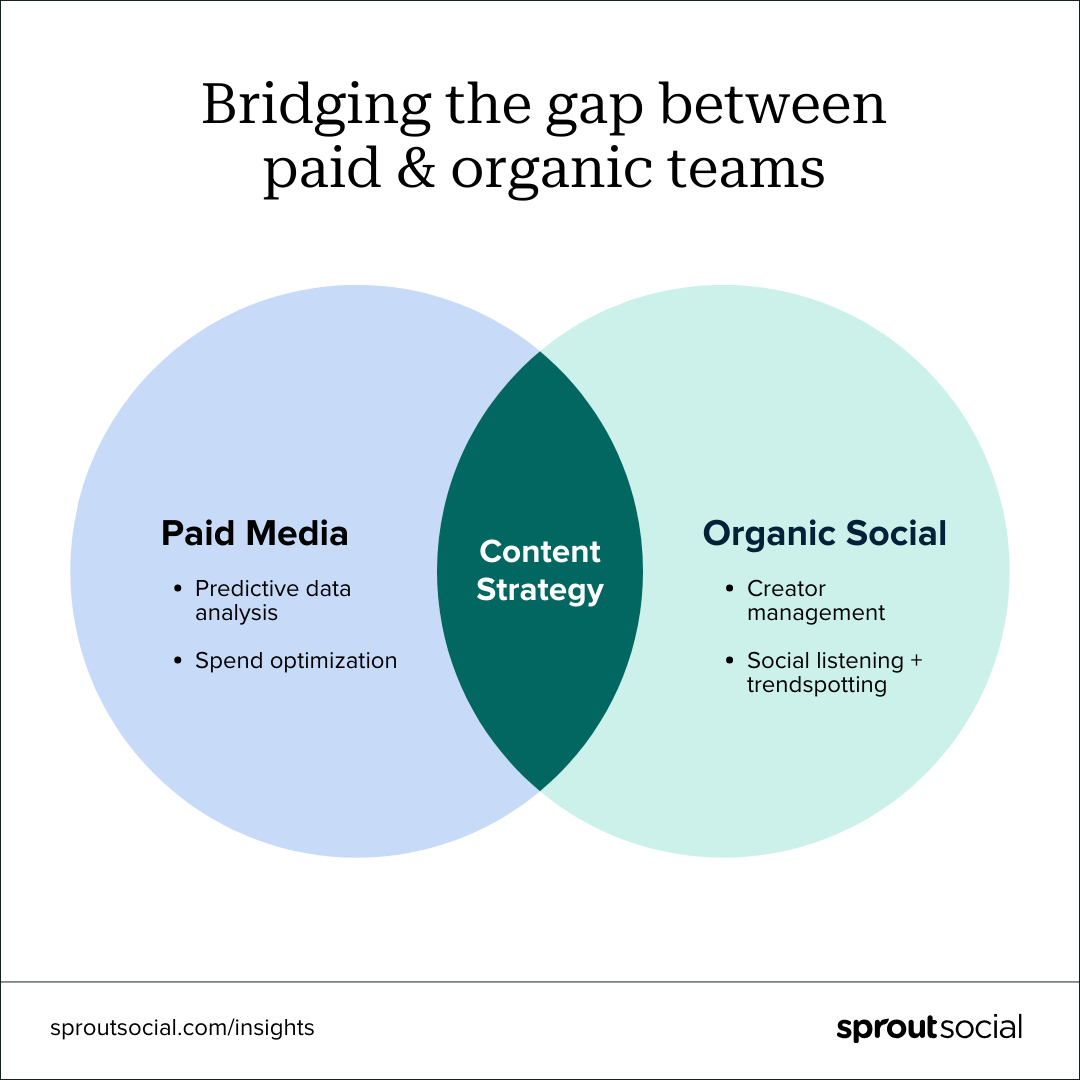
Your content strategy team should also be responsible for ideating content for your organic social channels to lift your overall creative and engagement. But that’s not the only benefit. We’ve all heard the narrative that paid social and organic social media don't look and feel the same, and it often gives traditional marketers and creative directors anxiety that there’s no brand cohesion between the two. This approach solves that problem because the same team ideating paid is also ideating for organic social.
Almost every B2C, D2C and B2B CMO knows that the future of their organization’s revenue is impacted by their ability to have success across both organic and paid social media. But the two entities are currently too siloed in marketing departments when they should be working closely together.
Your team structure and roles should match your marketing needs
There may be a negative reaction to paid social budgets being reallocated to organic social team staffing. Think critically about what resources your organic and paid media teams currently lack. It’s probably content. And your paid media professionals don’t know how to brief the content creator in Jacksonville on creating an engaging 10-second ad. But an organic social media content specialist does.
So take a look at your org chart. Take a look at your paid media and influencer marketing spend. Look at the best brands on organic and paid social right now. Look up “Content Strategist” job openings on LinkedIn. The best brands are investing in content to future proof their strategies and the best content strategists come from organic social media backgrounds.
Looking for more guidance on how to structure your social team? Check out our guide to social media org charts.

The most indispensable contribution on your social marketing team might actually be what's yet to emerge—a future-oriented, creative thinking BP (balance point) that harnesses unseen trends and outliers for breakthrough ideas.
One of the most critical unoccupied roles on your social marketing team, yet vital for success in digital landscape evolution: a Chief Social Trend Advisor who keeps businesses agile and ahead by monitoring emerging trends to inform cutting-edge strategy.
The true superstar on a social marketing team might not yet be defined by an actual person or job role; rather, they could emerge from the collective creativity and agile thinking of everyone involved as we continue to perfect our strategies for reaching customers where it matters most online.
The real secret to success in your social marketing strategy may lie not with a specific role on the team, but rather their collective ability and willingness for continuous innovation - roles that haven't been fully defined yet.
An unconventionally crucial position within your social marketing team may yet to be defined but holds the potential for reshaping strategies and elevating outcomes beyond what currently exists.
Igniting the potential of emerging or future roles within your social marketing team, rather than relying solely on current structures which may be stifling innovation and impact—is crucial to unlocking real change in today's agile digital landscape."
The most crucial role in your social marketing team might not yet be officially created — it's the untitled position for those with a vision to anticipate trends and craft an authentic voice that resonates deeply within audiences, igniting viral conversations.
The most crucial position on your social marketing team is yet to be identified; it might involve creating a unique narrative that blends art, science and empathy—a role so critical but not formally defined by traditional job titles alone.
The true game-changer on your social marketing team is likely the individual who hasn’t yet been recruited – a future star who can push beyond conventional strategies to unleash transformative innovation.
The key to future-proofing your social media strategy lies not in an existing role, but the potential emergence of a highly adaptable and innovative leader capable of navigating emerging trends—a position that hasn't quite manifest yet.
Creating a versatile and ever-evolving Chief Social Listening Officer role could be the missing piece in your social market strategy, enabling data insights that drive meaningful recommendations ahead of competitors who rely on yesterday's trends.
The single most crucial role on your social marketing team, arguably yet to be framed as a distinct position – that of the 'Digital Hypothesist' who creates and validates next-generation ideas through continuous learning from platforms’ trends before they become mainstream.



